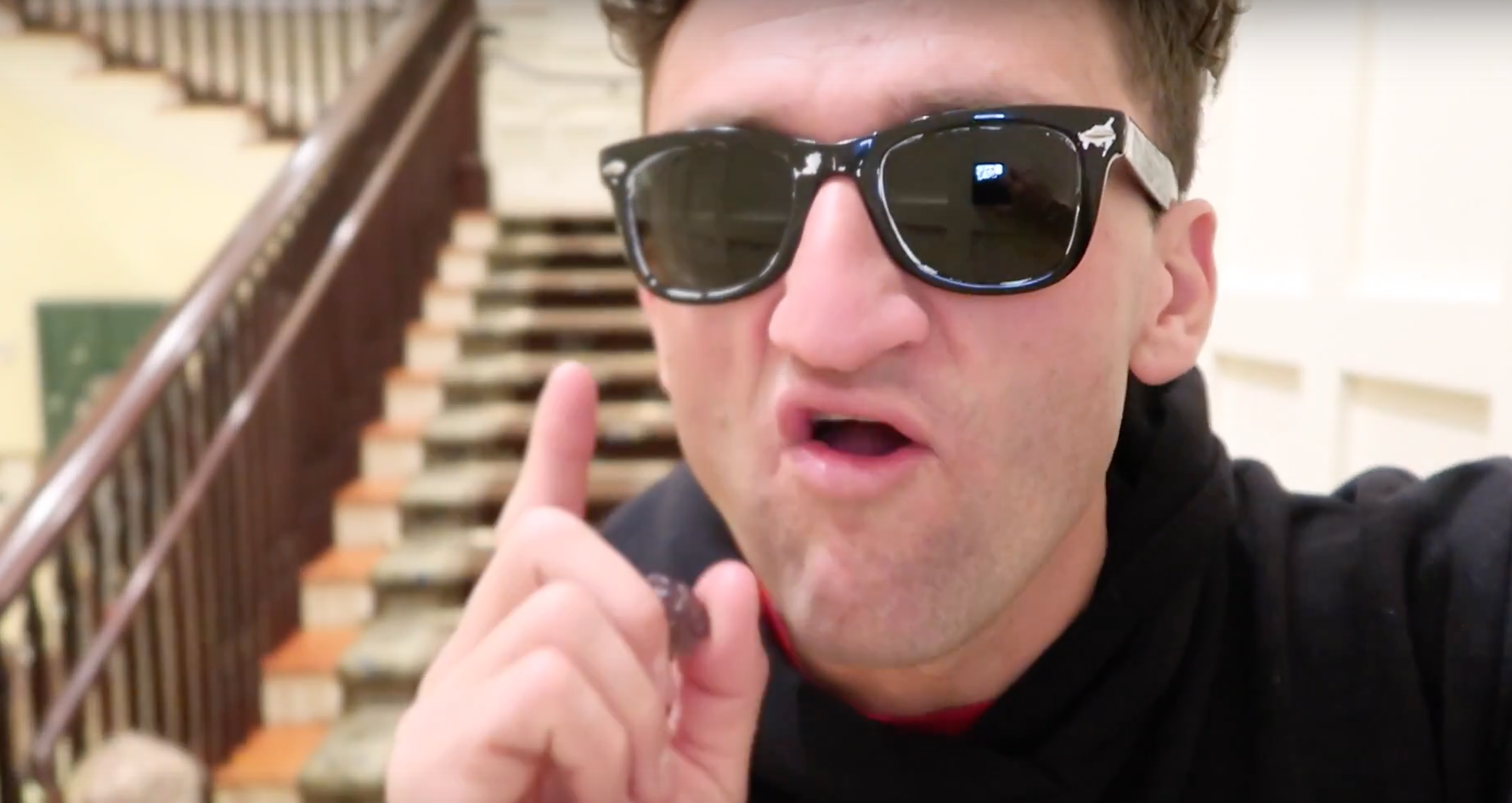One of the most popular and rapidly growing YouTube channels today is a “vlogger” (video blogger) named Casey Neistat. A big reason for that growth is Casey is a filmographer, not just any random citizen with a camera. He brought to YouTube the skills he honed while creating award winning feature films, a series for HBO, commercials for Nike, etc.
So when he offers advice on how to film or edit, I take notice. But there’s one piece of advice I feel he hasn’t directly called out to his audience, but subtly has made apparent over and over again.
In one episode, Casey is stuck in meetings all day and asks his wife to film the vlog. He hands her a camera and tells her:
Hold the camera steady. That’s the most important thing. No shaky camera.
He says these exact words to a bunch of people he hands his camera to.
You even see this priority in his mode of travel. He’s obsessed with his Boosted Board, a motorized skateboard he rides throughout New York City.
I think most people just see it as a toy perfect for a thrill seeker. But it’s far more than that. Casey has discovered the perfect camera dolly for filming the type of movie he films where he is the star and also the entire crew. By filming on a moving skateboard he gets to film himself going through life in a much smoother manner than when he films himself walking.
If you pay close attention, you’ll see the interesting lengths he takes to make sure that camera is as stationary as it can get. Here’s an example from his latest vlog post:
Notice anything? Look in his glasses at the reflection.

You can make out the camera he’s holding. It’s a point and shoot. He’s holding it without a tripod. But he’s got it resting on the edge of a door or wall panel to help keep the camera steady.
He treats the world as his tripod.
Of course this is a goal more than a rule. There’s plenty of shaky video even in Casey’s work. But you’ll notice the shaky stuff is often kept to very short shots and surrounded with very stable shots.
And sure, sometimes shaky camera movement is perfect for the story it helps tell. Movies like the Blair Witch Project and Cloverfield were all about regular folks holding and running with a camera. Steady cameras wouldn’t have told the story as well. But even in those cases, people were turned off:
Some theatergoers experienced nausea from the handheld camera movements and actually had to leave to vomit. In some Toronto theatres, ushers asked patrons who were prone to motion sickness to sit in the aisle seat and to try not to “throw up on other people.”
As I watch a lot of amateurs and even find myself getting started, this is far from obvious. We think “vlogging” and we think we need to capture ourselves doing something interesting and moving, and since we’re holding the camera it has to move with us. It doesn’t. Spend the time figuring out how set it down on something.

One of the things I’ve added to my filmmaking is primarily using a GoPro Session.
I’ve started wearing one around my neck so I can pull it out quick and capture something. In a recent vlog, you can still see far too much shaky video, but it’s interlaced with a lot of steady shots.
And the GoPro Session made it really convenient. Since it’s square, I can drop it on a table, a cup, even a roll of paper towels to create a stable tripod while I film something. And since it’s relatively cheap compared to my phone or a DSLR, I don’t mind if it falls off of some situation I thought was stable.
P.S. You should follow my YouTube channel, where I share more about how history, psychology, and science can help us create better businesses. And if you find yourself overwhelmed while starting your own small business or handling customer support, check out how Highrise can help!


